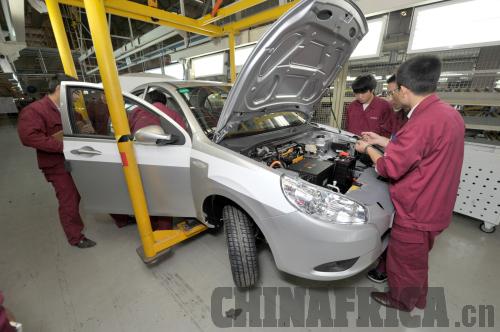|

To buy or not to buy
The truth is that favorable policy and huge market potential are not seeing corresponding profits in this sector.
The sales of new energy vehicles, especially pure electric ones, mainly depend on government procurement. Low consumer recognition and insufficient charging facilities are all factors resulting in sluggish commercialization of new energy vehicles.
Compared with gas-powered cars, new energy vehicles are both energy- and money-saving. Taking the third-generation J3 EVs made by JAC for example, the car is sold at 150,000 yuan ($23,800). Besides, a buyer could be given subsidies of 57,000 yuan ($9,000) by the Central Government, 10,000 yuan ($1,590) by Hefei city government and 5,000 to 10,000 yuan ($795 to $1,590) by JAC, respectively. In the end, a Hefei resident will buy a car at only 75,000 yuan ($11,900). In addition, the car consumes only 14 kwh of electricity for every 100 km, enabling a driver to save 45 to 50 yuan ($7.17 to $7.97) for the distance compared to driving a gas-powered car. "Driving EVs for 10 million km will save 750,000 liters in fuel and cut carbon emission by 900,000 cubic meters," Jiang Min added.
The advantages have not aroused mass market appeal, however. In August this year, Guangzhou, capital city of Guangdong Province, introduced a license plate lottery for new cars and allocated 1,090 license plates for new energy and energy-saving vehicles in the first round of the lottery - but only 186 were used. So far, private purchases of pure electric vehicles are very few in Beijing as preferential policies are yet to be introduced.
"I plan to buy an electric car but am worrying about the charging problem," Liu Lichuan from Beijing told ChinAfrica. Lack of charging facilities is the biggest challenge in the new energy auto sector and there is still no clear answer to who should be responsible for building such infrastructure. "The government should introduce a unified standard for the infrastructure like charging stations, in order to promote the sector," said Jiang.
According to the national development plan for new energy and energy-saving vehicles, a network comprising 2,000 charging stations and 400,000 charging points in more than 20 pilot cities and their nearby areas will be established by 2015.
JAC has taken the lead in solving the power charging issue. For its third-generation J3 EVs, two kinds of charging cable are available, matching with charging points built by the State Grid and household outlets respectively.
"It can travel at least 100 km after one-time charging, enough for short-distance transportation in cities," said Jiang. She owns a third-generation J3 EV and expects charging stations will be established in as many cities as possible before too long, adding to customer cost saving and environmental protection for the future. |